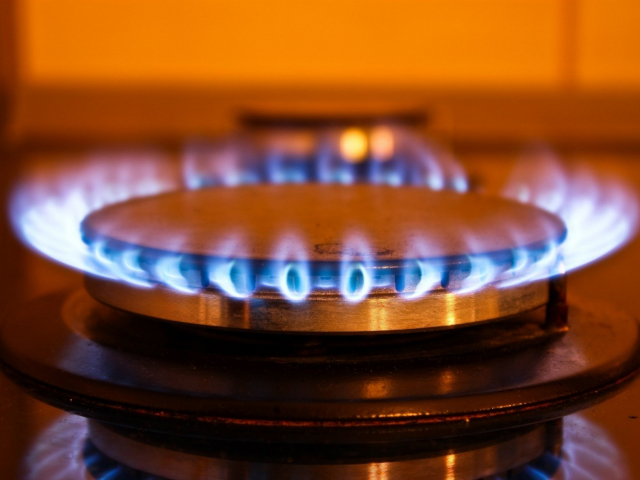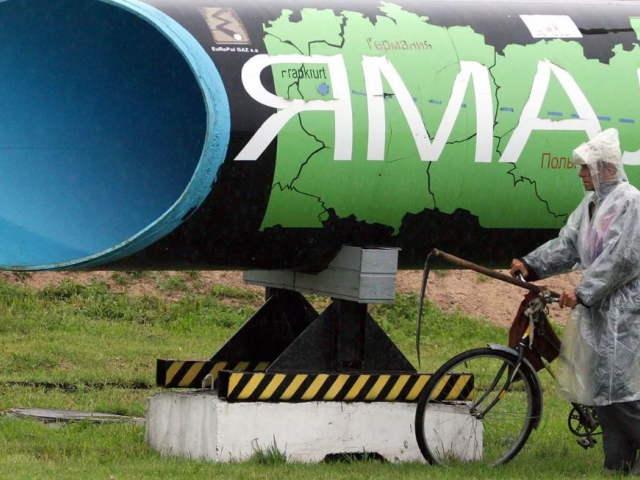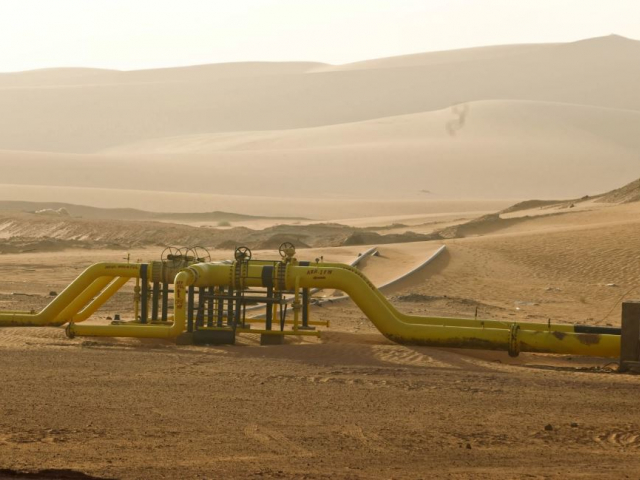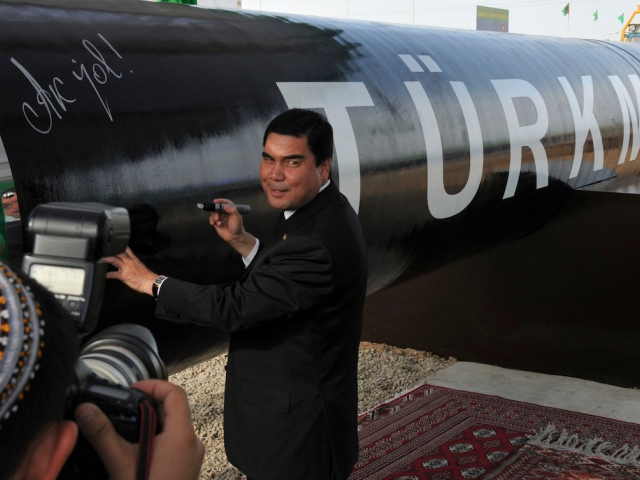
Hollywood’s highest-earning actors of 2024
Hollywood actors have always made big money. 2024 was no exception. Forbes recently released its ranking of the highest-paid actors of the year. Let's find out who secured the top spots.


Natural gas is used as a source of energy for cooking, heating, electricity generation as well as producing various oils and synthetic chemicals. In addition, it reduces dependence on heavily polluting coal and plays an important role in the development of gas-consuming regions.

Nord Stream Pipeline – 1,224 km
It is the longest subsea gas pipeline in the world which connects Russia to the countries of Western Europe, running across the Baltic Sea to Germany (from Vyborg to Greifswald).
The annual capacity of two strings is 55 billion cubic meters of gas. The first string of Nord Stream was put into service in 2011, while the second one – in 2012. Nord Stream 2, a new gas export pipeline, similar in the route, length, and projected capacity to the one in operation is expected to enter service in the near future.

Yamal-Europe Pineline - over 2,000 km
Yamal-Europe pipeline is one of two Russian gas pipelines included in the top ten. It runs across four countries: Russia (402 km), Belarus (575 km), Poland (683 km), and Germany. The gas pipeline constructed in 1999 ensures an expanded uninterrupted supply of Russian gas to Europe, reaching an annual design capacity of 32.9 billion cubic meters in 2006.
The trunkline includes 14 compressor stations. The pipeline runs from the Torzhok gas transmission hub in the Tver Oblast. The westernmost point is the Mallnow compressor station near Frankfurt an der Oder.

Transmed – 2,475 km
Thanks to the Trans-Mediterranean pipeline, natural gas delivery stretches from Algeria and other regions of North Africa via Tunisia to Sicily and thence to northern Italy. An extension of the pipeline delivers gas to Slovenia. A 96-kilometer trunkline from Sicily to Tunisia runs across the Mediterranean Sea at a water depth of 1,500 meters.
The first phase of the pipeline was constructed in 1978-1983, while the second phase - in 1994. The current capacity of the Trans-Mediterranean pipeline exceeds 30 billion cubic meters of natural gas per year.

Iran-Turkey Pipeline – 2,577 km
The pipeline running from Tabriz via Erzurum to Ankara was initially supposed to be part of the Pars pipeline and connect Iran's South Pars gas field to European consumers. However, sanctions impeded the implementation of its construction.
Its current capacity is 14 billion cubic meters per year. So, Iran has an opportunity to enter the European market by 2020, exporting up to 20 billion cubic meters of natural gas per year (with a total export capacity of 35 billion cubic meters per year).

Rockies Express (REX) - 2,702 km
The giant Rockies Express high-pressure natural gas pipeline launched in 2009 consists of three sections running parallel to one another. It passes through eight states from the Rocky Mountains of Colorado to Ohio.
REX constructed in 2009 is the second largest gas export pipeline in North America (after Tennessee Gas Pipeline). Its capacity is 37 billion cubic meters of gas per year.

Bolivia-Brazil Pipeline - 3,150 km
Bolivia-Brazil is the longest natural gas pipeline in South America. It consists of two stretches with a length of 1,418 km and 1,165 km put into service in 1999–2000.
Annually, about 11 billion cubic meter of natural gas is transported from Bolivia to the south-east regions of Brazil.

Tennessee Gas Pipeline - 3,300 km
The Tennessee pipeline was the first main natural gas pipeline in the United States.
This pipeline constructed in 1944 consists of five stretches delivering natural gas from the Gulf of Mexico via Arkansas, Kentucky, Tennessee, Ohio, and Pennsylvania to West Virginia, New Jersey, New York, and New England. Its annual capacity is up to 22-25 billion cubic meters of gas.

Urengoy-Uzhhorod Pipeline – 4,451 km
This main export gas pipeline was constructed in 1983 to supply natural gas from the northern part of Western Siberia to the countries of Central and Western Europe.
The gas pipeline split into three branches crosses the Ural Mountains and more than 600 rivers including the Ob, Volga, Don, and Dnieper. It has 42 compressor stations. Nine of them are located in Ukraine which accounts for 1,160 km of the trunkline. The actual capacity of the pipeline is 28 billion cubic meters of natural gas per year.

Central Asia-Center Gas Pipeline System (CAC) – 5,000 km
The Central Asia-Center gas pipeline is used to transit natural gas from Turkmenistan via Uzbekistan, Kazakhstan, and Russia to non-CIS countries.
The cooperation of these states increased the capacity (up to 80 billion cubic meters of gas per year) and enhanced the reliability of the CAC.
The first section of the pipeline was launched back in 1967. By 1985, the CAC was a multi-line system pipeline system running across the largest rivers of the region (Amu-Darya, Volga, Ural, Oka).

Turkmenistan-China Gas Pipeline - over 7 thousand km
The giant Turkmenistan-China pipeline system makes it possible to transport natural gas from Central Asia via Uzbekistan and Kazakhstan to China.
This trunkline was put into service in 2009. Its current capacity is about 65 billion cubic meters of natural gas per year. The pipeline supplies gas extracted in the fields of Southern Yoloten-Osman and Dovletabad in Turkmenistan.

East-West Gas Pipeline– 8,704 km
China's East-West pipeline runs across almost the entire country connecting the Tarim Basin in Xinjiang Uygur Autonomous Region and Turkmenistan with the regions around the Yangtze River Delta and the Pearl River Delta.
This is the biggest construction project in China's gas industry: it includes one trunkline and eight branch lines passing through various natural areas. Four lines of the pipeline makes it possible to transport about 30 million cubic meters of natural gas per year.

Hollywood actors have always made big money. 2024 was no exception. Forbes recently released its ranking of the highest-paid actors of the year. Let's find out who secured the top spots.

The renowned travel magazine, Lonely Planet, has published a ranking of the most awe-inspiring landscapes on Earth. In this article, we will explore the top five winners—places that are truly worth seeing at least once in a lifetime

Tesla vehicles arouse different opinions, but one thing is certain—they are far from cheap. Over the past two years, Elon Musk's company has made several attempts to lower the price of its electric cars to make them more competitive with gasoline-powered vehicles. However, Tesla's price tags remain costly. Today, we take a look at the five most expensive models of this iconic brand.
Your IP address shows that you are currently located in the USA. If you are a resident of the United States, you are prohibited from using the services of InstaFintech Group including online trading, online transfers, deposit/withdrawal of funds, etc.
If you think you are seeing this message by mistake and your location is not the US, kindly proceed to the website. Otherwise, you must leave the website in order to comply with government restrictions.
Why does your IP address show your location as the USA?
Please confirm whether you are a US resident or not by clicking the relevant button below. If you choose the wrong option, being a US resident, you will not be able to open an account with InstaTrade anyway.
We are sorry for any inconvenience caused by this message.